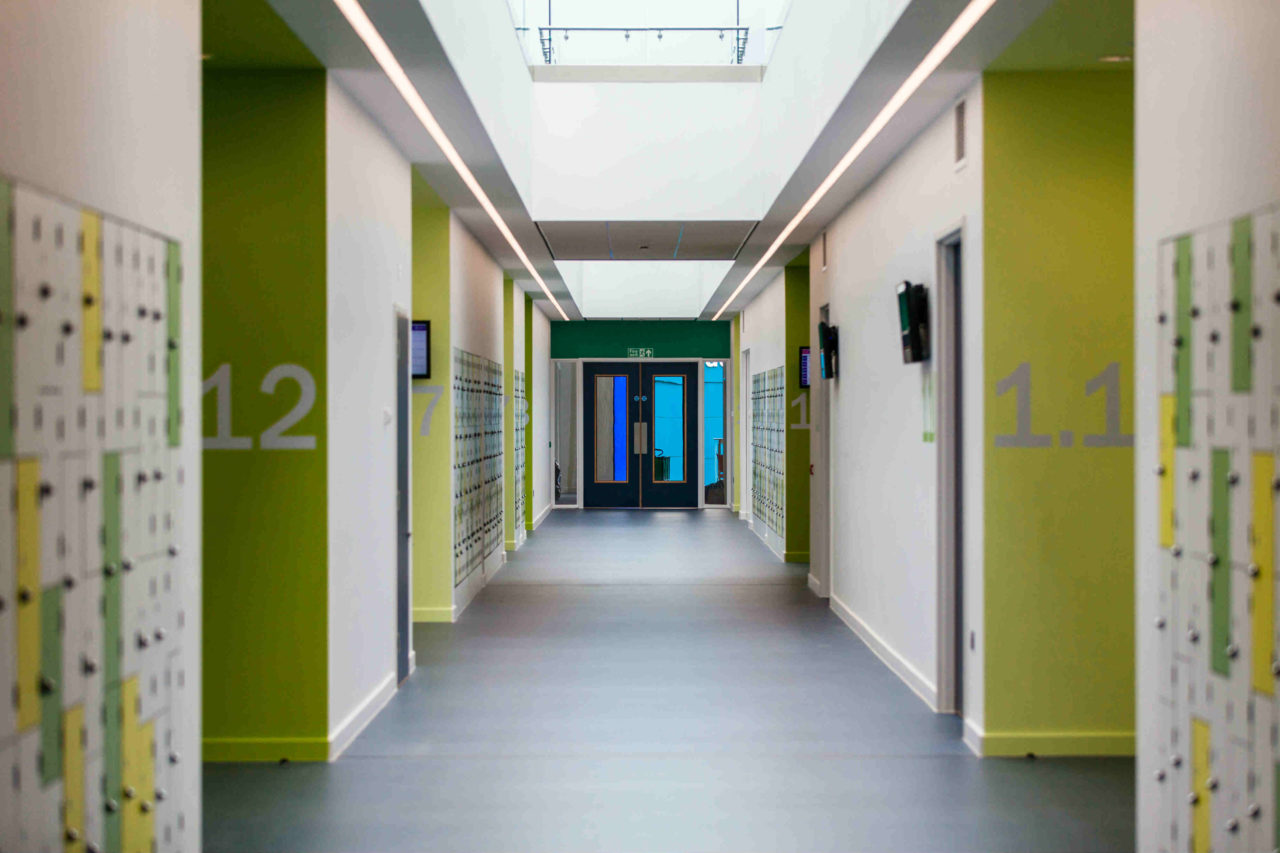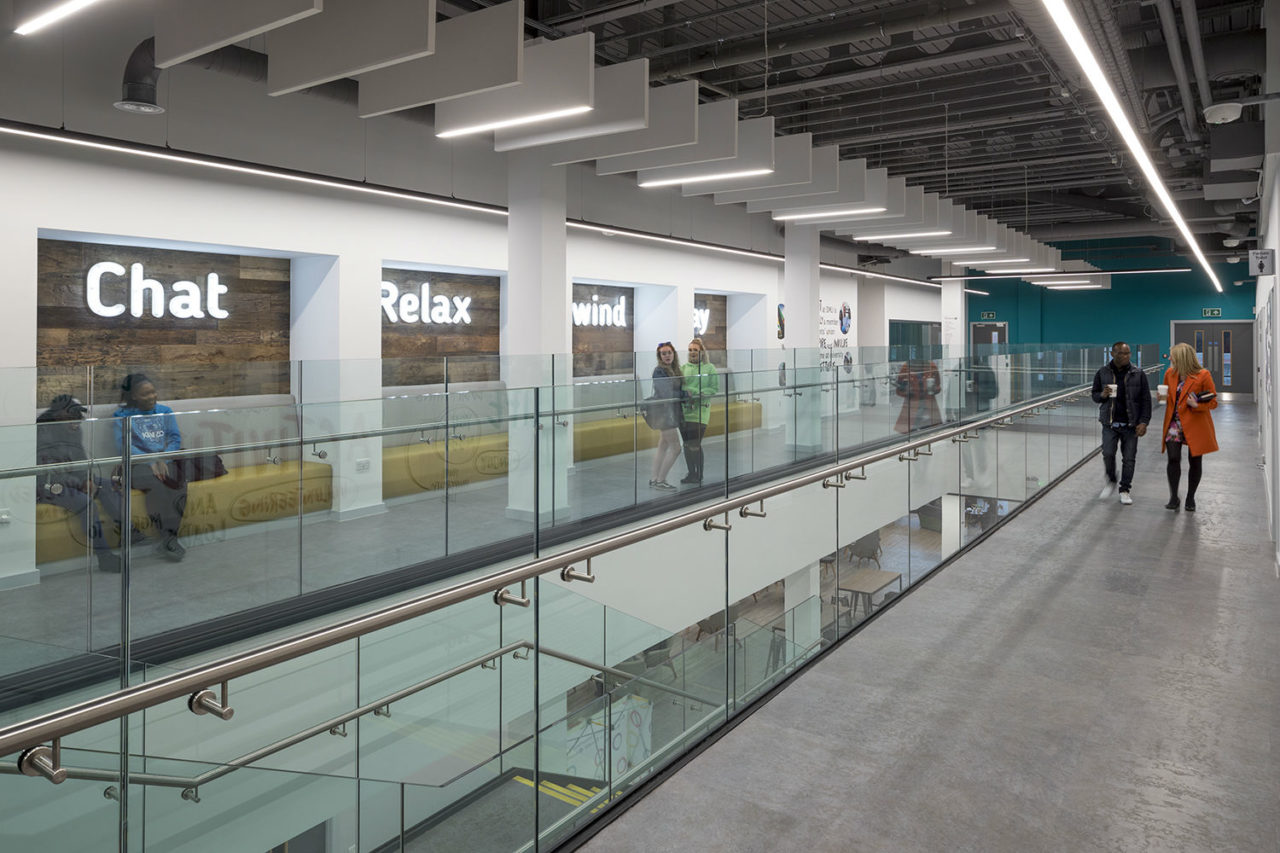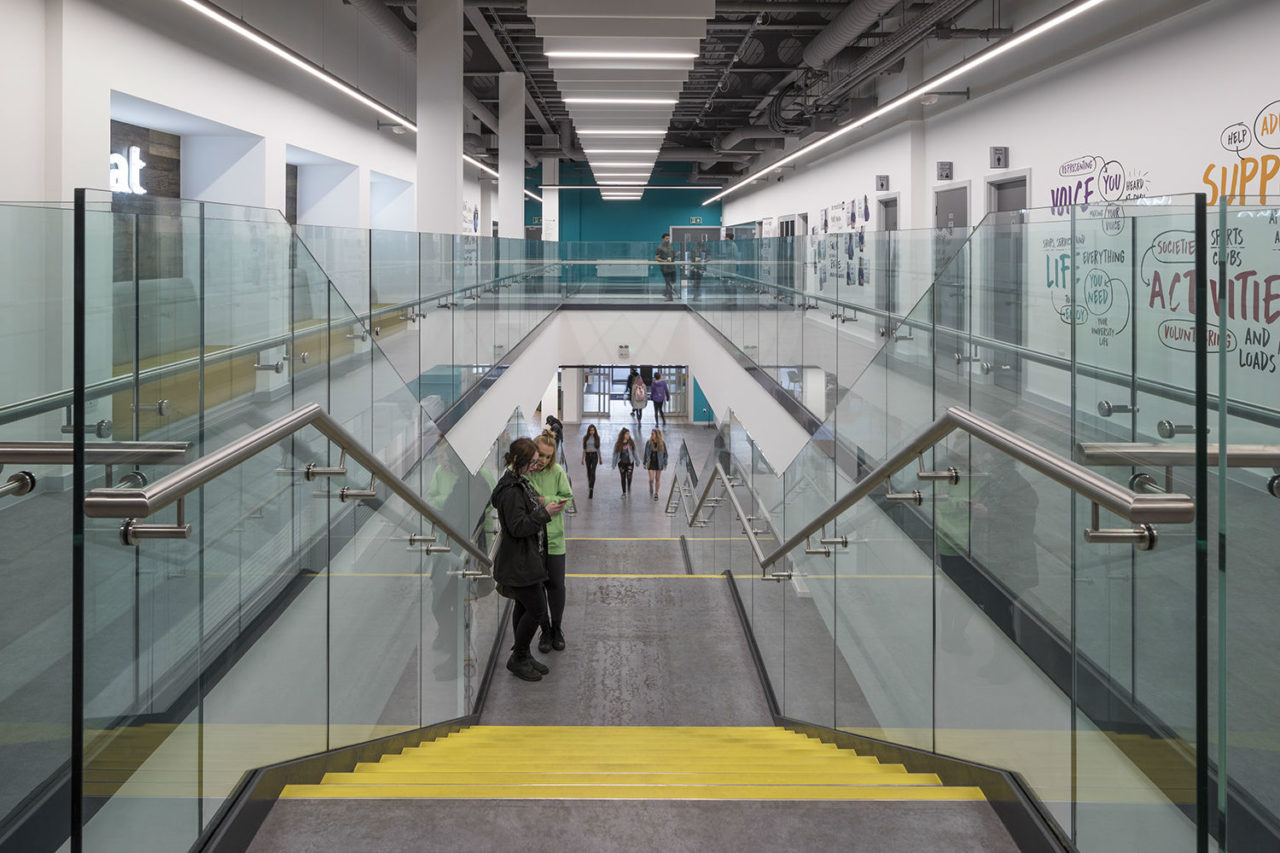Wayfinding can have a very powerful impact on our wellbeing. Here, Work In Mind asks wayfinding experts CPMG Architects just how can it influence our physical and mental health.
For the uninitiated, what is wayfinding?
Wayfinding is to do with connecting people with places by identifying gateways, decision points and destinations, linked by well-structured pathways with good sightlines leading to landmarks with a clear graphic identity.
A great example of bad wayfinding is getting lost, which is a common problem for many people. We often know our destination, but we rely on good wayfinding to help us get there and avoid challenges and frustrations en route.
Simple wayfinding strategies can be put in place to alleviate these situations, such as colour coding different floors within a building, or different departments. Sometimes, when this isn’t relevant, you need to rely on simple, clear signage.
At CPMG Architects, we develop simple, rational wayfinding solutions through a dynamic integration of brand, identity and information, to shape positive human experiences and create places where people want to be.

Is wayfinding more subtle and complicated than many people assume?
Yes, wayfinding is to do with the complex analysis of the movement of people in space. Creating environments where people want to be requires a deep understanding of how people respond to space, interact with it and move through it. It is related to volume, mass, spatial connectivity, light, temperature, colour, texture, furniture, views and other people.

When all of these factors coalesce successfully, we feel comfortable. For effective wayfinding, whatever the industry, it is essential to understand these complexities.
Why is wayfinding so important to wellbeing?
If we don’t know a place, there can be a real anxiety when we need to find the destination, either as a whole or a particular space within it. How do I get there? Who can give me directions? Where are the signs telling me where to go?
This can be unsettling, particularly if you’re on a deadline. Imagine too how much more difficult not knowing your way is if you have dyslexia or visual impairment, or if you are very self-conscious. People need to get to where they want to be easily and without stress.
Good designers fully understand that a space must respond to peoples’ needs. Generally though, people are only aware of the impact wayfinding has on their wellbeing if they can’t find their way, then get frustrated or anxious as a result.
Are the benefits of good wayfinding felt particularly keenly within specific industries?
The best of wayfinding strategies can generally be found in airports and transport hubs. Here, swift movement of people is critical to the efficient functioning of the environment.
Similarly, hospitals can embody the best in wayfinding experience. Hospitals are often large, complex buildings with a myriad of functions and departments, public areas and secure spaces. Here, wayfinding strategies must passively guide even the most distressed of people, quietly and sympathetically.
Wayfinding is also critical in retail, particularly in department stores where you can often get lost. You can stand at the foot of the escalator, trying to locate the department you’re after and the floor it’s on. Then, when you get to the right floor you need to find the right department. If the wayfinding is insufficient you end up following a route only to find it’s a dead-end, then retracing your steps and losing all sense of orientation. Then, once you eventually do find it, you have to find your way out!
Retail is not just the seductive presentation of merchandise, it’s as much about pleasurable experience too. Good wayfinding is passive, it’s reliable, there when you need it and not when you don’t.

Why is a well-thought-out wayfinding strategy so important within the construction industry?
In March 2018, the Health and Safety Executive (HSE) published data which highlighted construction as the industry in which individuals are most likely to suffer fatal injuries. Of the many hazards inherent in a building site, being struck by a moving vehicle is second only to falls from height as the most likely factors to cause such injuries. This is why we see well-marked footpaths on construction sites – segregating pedestrians from heavy vehicles and providing clear, legible instructions for priorities, where a crossover is inevitable.
The use of signage on construction sites is regulated by the HSE. However, each site is unique and so every person present on a site must also undergo an induction in which they’ll be briefed about the site and given instruction and training on how to conduct themselves whilst they are there.
How can wayfinding impact on wellbeing in an education setting, particularly where special needs should be taken into consideration?
In a SEN environment, it can be challenging for pupils to recognise spaces with different functions. We use simple graphics to describe the function of a space. For instance, an image of a test tube and flask with some bubbling liquid tells students this is a science lab. Those using the space are not solely reliant on words to locate or inform them.
With our work in special school environments, like Castle Wood School in Coventry and Kemball Special School in Stoke, bringing identity to a home zone – where a pupil might spend a year of their education, for instance – helps to locate them within the wider environment. Identity can be expressed through colour, texture and graphics for unique zones which are easy to find and where their closest relationships are found. It’s familiar and safe.

In a work environment, would you say that good wayfinding could improve productivity too and therefore also profit?
It’s increasingly important to create ‘efficient’ workplaces, particularly considering how much our working environments have kept pace with the evolution of information technology and flexible working patterns. These trends are starting to impact on our space utilisation and the flexibility it has given us to work in a variety of settings.
Productivity however, relies on much more than an efficient working environment; it relies on motivation too. It’s imperative that we put people first: it’s all about people, purpose and place. These three aspects of your life at work contribute to your wellbeing, your motivation and so, your productivity.
Enjoyed this article, find more content on wellbeing here.
With thanks to Sara Harraway, director at CPMG Architects, and senior interior designers Ruth Evans and Cristina Riley.
Content Team
Work in Mind is a content platform designed to give a voice to thinkers, businesses, journalists and regulatory bodies in the field of healthy buildings.




